Top 7 Largest animals in the world
The earth is not just for us. We share it with some of the most amazing creatures that rule the wilderness and the oceans. One of the great aspects of wildlife is that animals take many forms and shapes and come in a great diversity of sizes that a human can only imagine. For someone who loves wildlife and cares about it, you would want to learn about the largest animals in the world, the animals that actually rule our planet. Some of the animals are so big that we truly wonder if they want, they could wipe us out entirely like we are currently doing to them.
The truth can be bitter, and even the largest animals in the world, on this planet, are vulnerable at the moment, with most of them being endangered. In the age of information technology, we forget that there is a whole different life happening in some of the deadliest places on the earth.
From tallest to largest, and heaviest, we will focus specifically on the biggest animals that have ever lived on earth. So, keep on reading and try to gather as much information as you can.
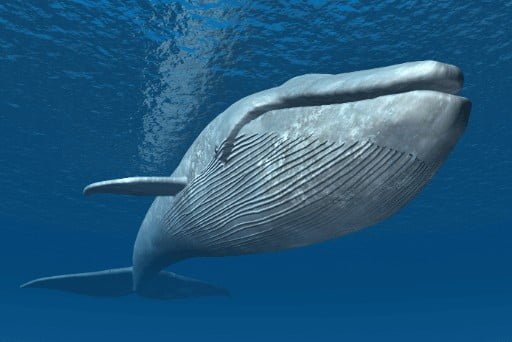
1 Blue Whale
The blue whale holds the remarkable distinction of being the largest animal to have ever inhabited our planet. Towering over all other creatures, it can reach lengths of up to 30 meters and weigh approximately 198 tons. To put this into perspective, its heart alone weighs as much as a car, and its tongue is equivalent in weight to that of an elephant.
Spotting a blue whale is a rare occurrence, as they spend most of their lives in the depths of the ocean. They only surface periodically to breathe, making them elusive and challenging to observe. Consequently, there are limited photographs capturing these majestic giants in their natural habitat.
Despite their colossal size, blue whales possess a unique diet that sets them apart. Rather than consuming large marine animals, they sustain themselves by feasting on nutrient-rich plankton, which are minuscule microorganisms that drift through the ocean. These tiny organisms are the key to the blue whale’s survival and allow them to thrive in their marine environment.
The awe-inspiring nature of the blue whale serves as a reminder of the incredible diversity and wonders of our planet’s oceans. As ambassadors of these vast and mysterious underwater realms, they inspire us to appreciate and protect the fragile ecosystems that support their existence.
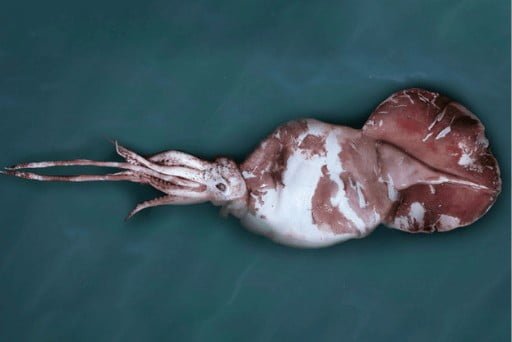
2 Colossal Squid
The colossal squid, residing deep within the ocean’s depths, remains one of the greatest enigmas of the underwater world. Rarely encountered, it is believed to be one of the largest creatures on Earth. While the largest documented squid reached a length of 14 meters, there is ongoing speculation and debate on the internet regarding the potential size of colossal squids, with claims ranging from 18 to even 27 meters. Such dimensions would truly make them giants of the deep.
One astonishing feature of the colossal squid is its possession of the largest eyes in the animal kingdom. These remarkable visual organs can measure up to 10 inches (25 centimeters) in diameter, enabling the squid to navigate the dark depths and detect prey in low-light conditions. The sheer size of their eyes demonstrates their adaptation to the deep-sea environment they inhabit.
Given their elusive nature and the challenges of exploring the depths where they reside, much about the colossal squid remains a mystery. Scientists continue to study these fascinating creatures in an effort to unravel their secrets and shed light on their extraordinary biology and behavior. As we uncover more about these colossal beings, our understanding of the vast wonders of the ocean world deepens, reminding us of the incredible diversity and complexity that exists beneath the waves.
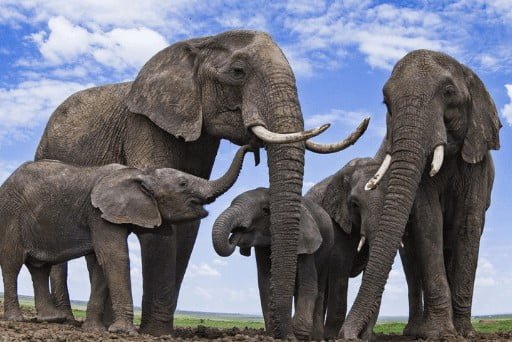
3 African Elephants
African elephants, known as the largest living land animals, are truly magnificent creatures. They can weigh up to an astonishing 7 tons and reach lengths of around 35 feet from trunk to tail. Standing at a shoulder height of approximately 13 feet, these gentle giants command awe and respect wherever they roam.
Not only are African elephants remarkable for their size, but they also possess extraordinary intelligence. They are widely recognized as one of the most intelligent animal species on Earth. Their cognitive abilities and memory far surpass those of humans, allowing them to navigate complex social structures and remember intricate details of their environments.
Tragically, African elephants face the grave threat of poaching. These majestic animals are relentlessly hunted for their valuable ivory tusks, despite international bans on the ivory trade. The demand for ivory products, primarily in certain Asian markets, continues to fuel this illegal trade, putting the elephant population at risk.
Native to the diverse landscapes of African jungles and deserts, elephants play crucial roles in maintaining the balance of ecosystems. They are keystone species, shaping the environment and supporting the growth of other plant and animal species through their feeding and movement patterns.
Conservation efforts are underway to protect these incredible creatures and ensure their survival. Anti-poaching initiatives, community-based conservation projects, and international collaborations are vital in combating the illegal ivory trade and preserving the habitats essential for the elephants’ well-being.

4 Giraffe
Giraffes, the tallest living animals on Earth, possess a majestic stature that can reach an impressive maximum height of 19 feet. Notably, their iconic necks alone can measure over 6 feet in length, allowing them to tower above the savannah landscapes of East Africa where they gracefully roam.
These magnificent creatures are herbivores, relying on a diet consisting mainly of leaves from tall trees. Their unique adaptation to their environment is exemplified by their elongated, prehensile tongue. This specialized tongue, which can be up to 18 inches long, serves as a remarkable tool for feeding. Giraffes deftly employ their tongues to skillfully pluck fresh leaves and tender shoots from the uppermost branches of trees, a feeding technique that sets them apart.
Observing giraffes in their natural habitat is a sight to behold. Their elongated necks gracefully extend to reach the canopy, while their distinctive coat patterns blend with the surrounding grasslands. As they delicately nibble on foliage, their presence evokes a sense of wonder and awe.
Giraffes not only contribute to the ecological balance of their habitat but also captivate our imagination with their unique anatomy and behavior. Their towering presence and elegant movements remind us of the diverse and fascinating creatures that inhabit our planet’s rich tapestry of life.
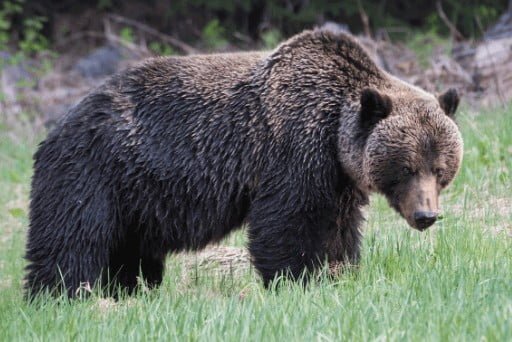
5 Brown/Grizzly Bears
Grizzly bears, known as the largest land carnivorous animals, are truly formidable creatures. A fully grown brown bear can weigh an astonishing 1 ton and reach a maximum height of up to 10 feet when standing upright on its hind legs. Their imposing size and strength make them a force to be reckoned with in the natural world.
These magnificent bears have a particular affinity for fish, which constitutes a significant portion of their diet. With their keen senses and powerful physique, grizzly bears are expert hunters. They exhibit remarkable patience and wait along the shores of rivers and lakes, ready to seize any opportunity that arises. When the timing is right, they swiftly plunge into the water, using their impressive swimming skills to pursue and capture fish with precision and efficiency.
Grizzly bears inhabit the rugged mountains and vast forests of North America, Asia, and Europe. These diverse habitats provide them with the necessary resources for survival, including ample prey, shelter, and suitable denning sites. Their presence in these ecosystems is not only a testament to their adaptability but also an integral part of maintaining the delicate balance of these natural landscapes.
While their powerful and awe-inspiring nature commands respect, it is crucial to approach grizzly bears with caution and a deep understanding of their behavior. Coexistence between humans and grizzlies requires responsible management, education, and a commitment to preserving their natural habitats.

6 Whale Shark
The whale shark, the largest living fish to grace our oceans, is an awe-inspiring creature. With a maximum length of around 40 feet and weighing up to a staggering 24 tons, they command attention and inspire wonder. These gentle giants are not only the largest fish but also among the most captivating marine animals to have ever roamed our planet.
Like their counterparts, the blue whales, whale sharks sustain themselves by feeding on tiny plankton. Despite their colossal size, these magnificent creatures possess a filter-feeding mechanism that allows them to consume vast quantities of microscopic organisms from the surrounding waters. They gracefully glide through the ocean, their colossal mouths wide open, filtering out plankton and other small marine life.
Whale sharks can be found in tropical seas across the globe, gracing the waters of various regions with their majestic presence. Their migratory behavior takes them to different feeding grounds and provides opportunities for researchers and enthusiasts to witness their remarkable splendor.
Tragically, these magnificent creatures face the threat of hunting in certain areas, placing them in a vulnerable state. Efforts to conserve and protect whale sharks are essential in ensuring their continued existence. Conservation initiatives, such as promoting sustainable fishing practices and establishing protected marine areas, are vital for safeguarding their populations.
The vulnerability of the whale shark highlights the importance of understanding and respecting our marine ecosystems. By valuing the intricate interconnectedness of marine life and advocating for responsible environmental practices, we can help preserve the grandeur of the world’s largest fish and maintain the biodiversity and beauty of our oceans for generations to come.
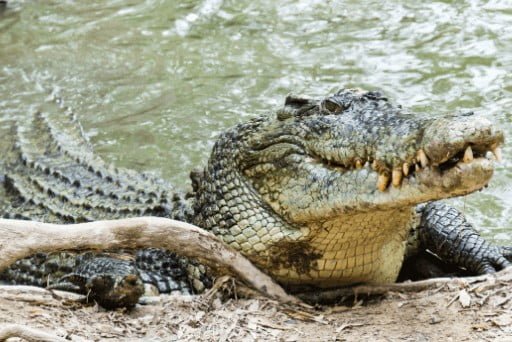
7 Saltwater Crocodile
Saltwater crocodiles are one of the deadliest predators that walk the earth. They can grow as large as 17 feet and weigh a whopping 1000 pounds. Record says that a saltwater crocodile can grow up to 21 feet long. They prefer brackish and saltwater and are native to Australia and India. They don’t have a special diet. Saltwater Crocodile feed on all animals that they can grab with their massive, powerful jaws.
These are some of the largest animals in the world. They are majestic and are in dire need of help and conservation. If you want to read more about other big animals, like the biggest dogs in the world, check out our other articles!




